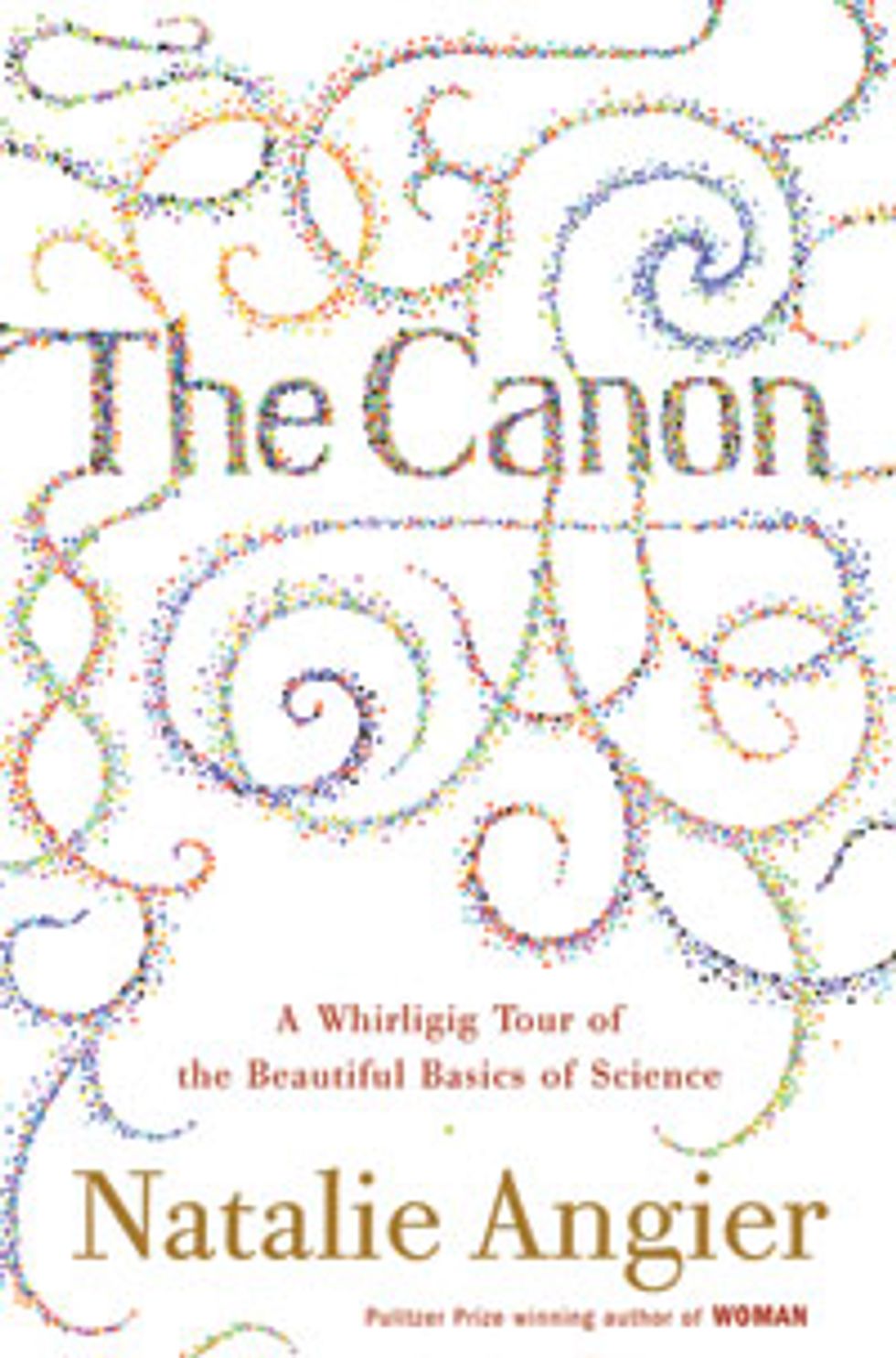Science in the United States has not fared well lately. Politicians and educators bemoan the diminishing numbers of science and engineering graduates. Scientists complain that the public is unfamiliar with stem cell research, climate change, the difference between a fetus and a blastocyte.
Natalie Angier says the ignorance can be traced to an image problem. ”In the civic imagination, science is still considered dull, geeky, hard, abstract and, conveniently, peripheral,” she writes. To overcome the ignorance and change the image, she has written a primer that argues science is exhilarating.
The Canon: A Whirligig Tour of the Beautiful Basics of Science, her ambitious, 304-page sprint through the fundamentals, delivers its lessons via cheerful interviews with hundreds of top-notch scientists. Perfect, one might think, for that misguided uncle or that troglodyte niece. But Angier's jittery style may alienate most cave dwellers and, presumably--if this reviewer is any indication--most modern humans as well.
That's not to say her premises aren't admirable. Daily life encourages a casual amount of scientific curiosity and experimentation--troubleshooting a computer, say, or even a sick pet--and Angier, who reports on science for The New York Times, draws on such familiar associations in her hummingbird-like treatment of science's major branches. She dips into physics, chemistry, and biology, and then flits on to rock formations and planets. She addresses the basic principles in each field, her chatty prose flipping between explanatory depth and comfortable imagery.
Along the way, she proposes some simple algorithms for making day-to-day life more comprehensible. This works well in a trick she calls the ”Fermi flex” for estimating the number of piano tuners in Chicago or guessing the circumference of the Earth.
Angier wants her readers to be more aware of the uncertainty of scientific evidence, the slippery side of statistics, the challenges of assessing scale. In explaining the spectrum of visible light, for example, she writes that if the sun were a Baskin-Robbins shop with 100 billion ice cream flavors, humans would be capable of tasting just five of them.
In frenetically hopping from idea to idea--such as comparing a platypus to a Marx brother and heavy quarks to Strom Thurmond-- The Canon easily lives up to its subtitle. Perhaps too well. But for those readers searching for a madcap blast through high-school-level science, this might be a place to start. That is, if any reader lasts beyond the first 50-odd pages, through which Angier's generalized pronouncements on ”scientists,” ”science,” and the ”scientific” tend to echo like a Buddhist chant.
She hits her stride when she writes about biology, her journalistic home turf. She sprinkles her narration with compelling oddball factoids--for instance, a single female cockroach can give rise to 40 million offspring in the 12 months or so of her life.
Much of the book reads half like poetry, laced with a subtle internal rhyme, and half like free-associative thinking delivered from a therapist's couch. Her voice lilts through the pages, with colorful and evocative turns of phrase that make the most mundane molecule bounce with anthropomorphic spirit.
Angier aims to make science accessible by relating it to emblems of Americana. She is compromised, however, by an overdeveloped power of association that sends her darting between chemical bonds and James Bond, electrons and Ellis Island. At times, The Canon resembles a chemistry textbook that has been tossed in a blender with a Norman Rockwell painting--which is occasionally tough to stomach.
The Canon: A Whirligig Tour of the Beautiful Basics of Science by Natalie Angier; Houghton Mifflin, Boston, 2007; 304 pp.; US $27; ISBN-10: 0-61824-295-3; ISBN-13: 978-0-61824-295-5
A somewhat ironic side effect of Angier's reliance on cultural clichés is that her more obscure comparisons end up undermining her goal of making science understandable. One wonders what stunningly erudite reader would immediately recognize that her oblique reference to Nijinsky refers to the ballet dancer, that Zelig is Woody Allen's chameleonesque character, and that Yertle the turtle hailed from a pond called Sala-ma-Sond. And after consulting Wikipedia for the umpteenth time, the reader is left unconvinced that such distractions illuminate anything.
Ultimately, Angier's overarching lack of focus robs her readers of anything solid to clasp, and she leaves them itching for a more substantive narrative to connect her ample supply of colorful anecdotes. Compare this to Bill Bryson's similarly spirited epic biography of nature, A Short History of Nearly Everything (Broadway Books, 2003), which succeeds where Angier's latest book doesn't by developing extended story lines that ensnare readers. Whereas Bryson ambles through the millennia, Angier writes as if chased by wildfire.
Then again, Angier's book is half the length of Bryson's, and for those readers charmed by her freewheeling style, The Canon is one way to tickle the brain.
